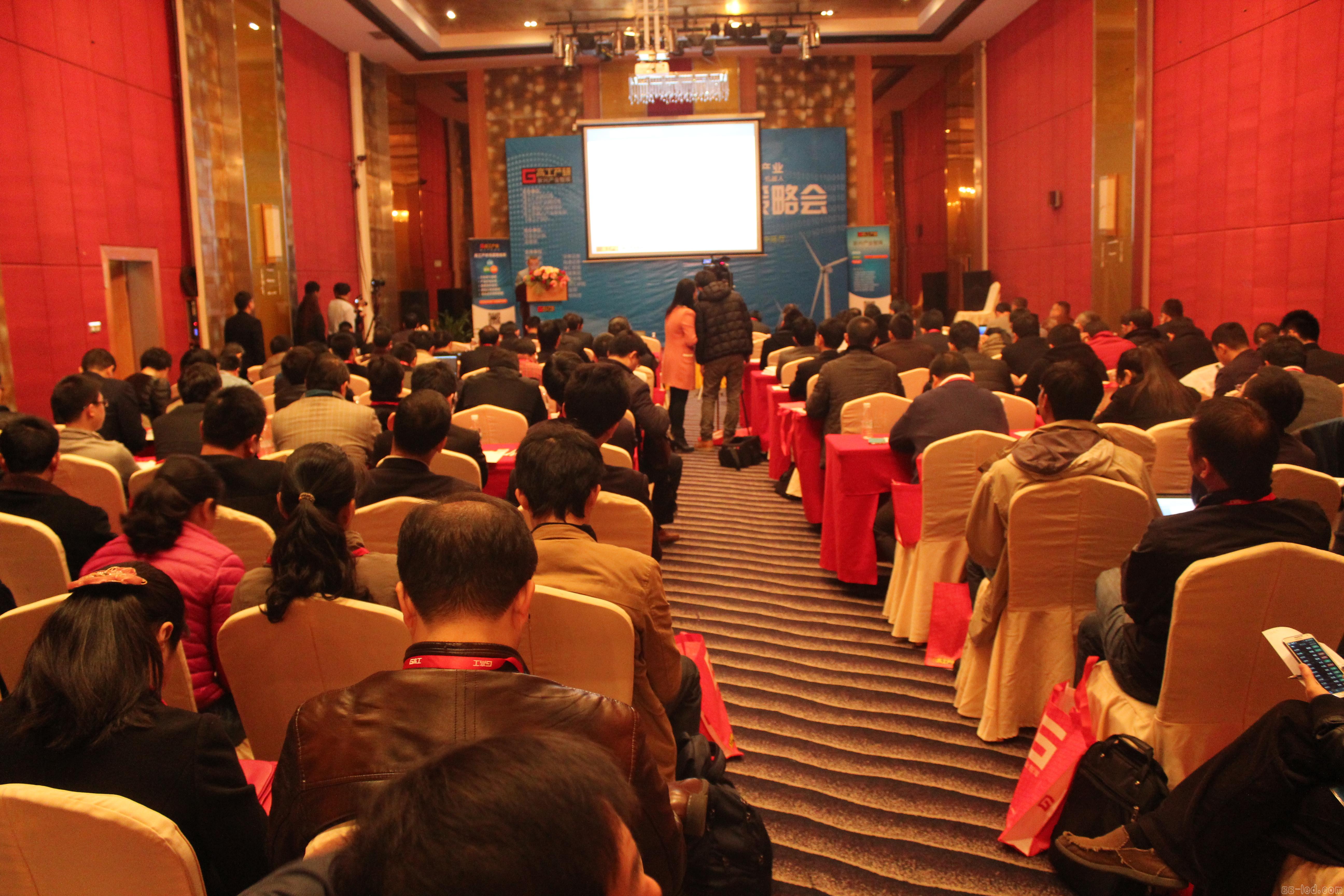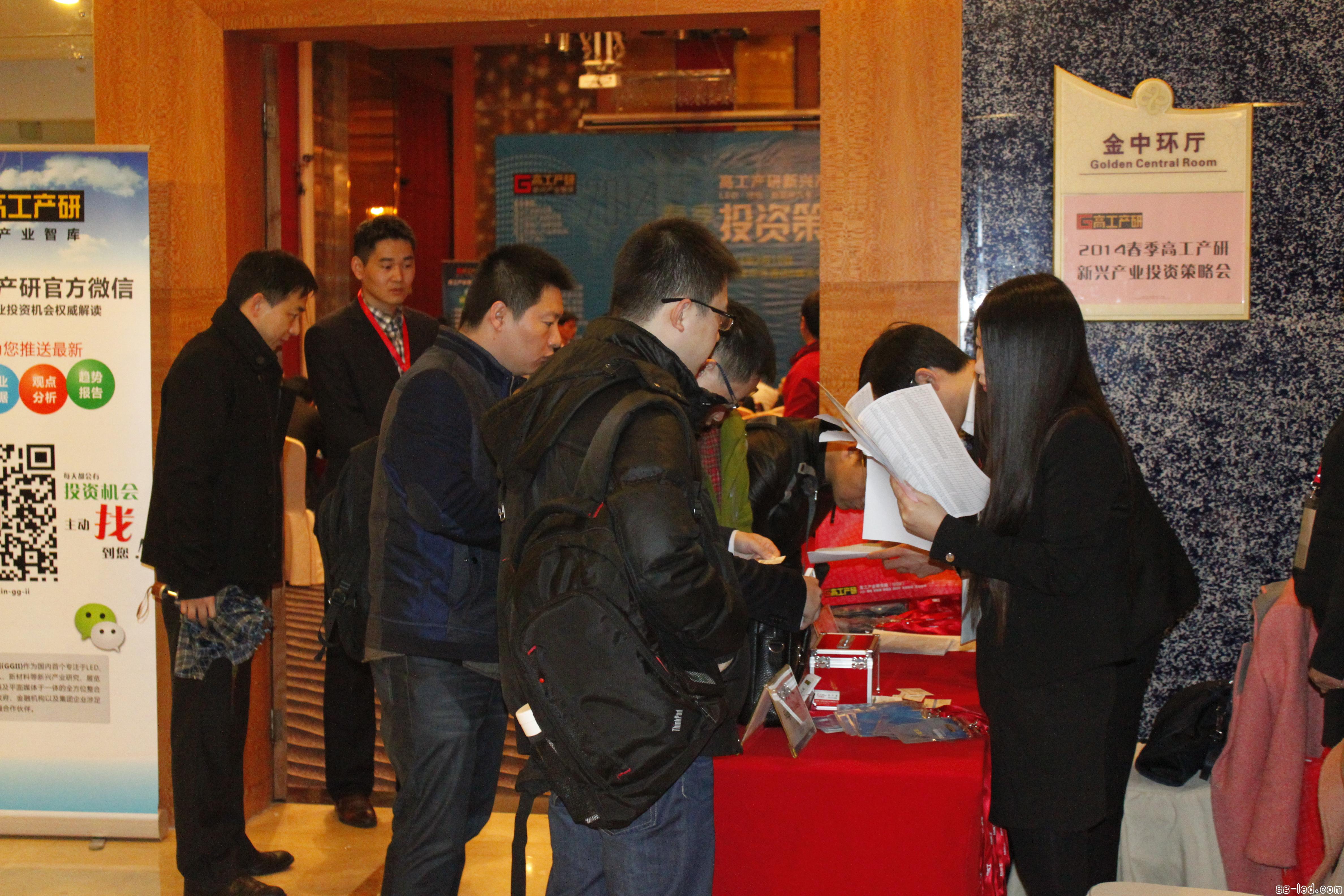The Central Economic Work Conference at the end of last year proposed six major tasks for economic work this year. The second one clearly pointed out that it is necessary to adjust the industrial structure, vigorously develop strategic emerging industries, and accelerate the optimization and upgrading of traditional industries.


meeting venue 
Guest sign
G20-LED Summit member company Hongli Optoelectronics (300219.SZ) only received intensive field research of 24 institutions in January 2014. Huacan Optoelectronics also accepted field research of 13 institutions in the same period, and acquired the lighting enterprise. Liard (300296.SZ), which has been suspended for nearly two months, also received field research from 31 institutions.
On February 19th, the spring investment strategy of high-yield research and development, which launched spring investment strategies around emerging industries such as LED, lithium battery and robotics, attracted the participation of nearly 100 brokers, funds and institutional investors.
LED lighting specials in the morning, including Huaxia Fund, Bosera Fund, Great Wall Fund, E Fund, Southern Fund, China Merchants Fund, Golden Eagle Fund, Zeyi Investment, Huatai Securities, Guotai Junan, Haitong Securities, China Merchants Securities, Fortune Lyon, Huachuang Securities , Zhongshan Securities, Ping An Securities, Shenyin Wanguo and Tongchuang Weiye, Shenzhen Venture Capital, Hyundai Financial Holdings, Lubomai, Dachen Ventures, Zhejiang Huarui, Oriental Fuhai and other investment institutions, G20-LED Summit member companies, Secretary of the Board of Directors, the decision-making level of the LED industry-related enterprises, and the head of the strategic investment department, all made their debut.
Indoor lighting dominates the future lighting market
“The market share of traditional lighting companies has been transformed. The LED lighting and packaging companies that have already listed will have certain advantages in lighting.†Dr. Zhang Xiaofei, Dean of the High-tech Industry Research Institute, said at the investment strategy meeting that the future lighting market Focusing on indoor lighting, LED lighting companies have advantages in outdoor lighting, and listed companies and state-owned enterprises will account for most of the market. Traditional lighting companies have little advantage, and most of the companies that used to do outdoor lighting will be eliminated.

Zhang Xiaofei, Dean of the High Industry Industry Research Institute
When talking about the future development of the LED industry, Dr. Zhang Xiaofei believes that industry consolidation will continue to increase in 2014. The number of enterprises with traditional lighting turning to LED lighting has reached its peak. The number of enterprises focusing on LED sales has reached its peak. The total number of enterprises in the LED industry will also reach its peak. The market competition will start to be fierce, and some enterprises will be integrated and withdrawn.
The investment opportunities of the LED industry in 2014 are undoubtedly the core concern of many institutional investors.
“The three main lines of LED industry investment in 2014 are upstream sapphire, downstream lighting application and mergers and acquisitions of the entire industry.†Zhang Hongbiao, research director of Gaogong LED Industry Research Institute (GLII), said in the speech that the current domestic sapphire flat substrate has been Accepted by most customers, sapphire demand will grow rapidly with the promotion of sapphire applications in high-end smartphones and smart wearable devices.

Zhang Hongbiao, Research Director, Gaogong LED Industry Research Institute (GLII)
Zhang Hongbiao said that in 2013, China's LED chip industry reached 8.4 billion yuan. Due to the growth of downstream application demand, chip supply is expected to remain tight in the first half of this year. In the second half of the year, with the investment of many enterprises expanding production capacity, supply and demand will improve. The annual price is expected to remain relatively stable.
According to GLII statistics, the scale of China's LED application industry reached 208.1 billion yuan in 2013, a year-on-year increase of 31%. The lighting market represented by indoor lighting is growing rapidly, showing a booming growth trend.
Zhang Hongbiao believes that in 2014, China's LED indoor and outdoor functional lighting output model will exceed 100 billion yuan, LED indoor and outdoor functional lighting continues the explosive growth trend in 2013, is the main engine of LED industry development.

Microwave PCB
microwave PCB`s is a type of PCB designed to operate on signals in the megahertz to gigahertz frequency ranges (medium frequency to extremely high frequency). These frequency ranges are used for communication signals in everything from cellphones to military radars. The materials used to construct these PCB`s are advanced composites with very specific characteristics for dielectric constant (Er), loss tangent, and CTE (co-efficient of thermal expansion).
High frequency circuit materials with a low stable Er and loss tangent allow for high speed signals to travel through the PCB with less impedance than standard FR-4 PCB materials. These materials can be mixed in the same Stack-Up for optimal performance and economics.
The advantages of using materials with a low X, Y and Z CTE is a resulting PCB structure that will remain extremely stable in high temperature environments while operating at up to 40 GHz in analog applications. This allows for the effective placement of very fine pitch components including, in some cases, bare die-attach. Additionally, the low CTE materials will facilitate the alignment of multiple layers and the features they represent in a complex PCB Layout.
Features
.CTEr = +40/+50 ppm per °C (low); Tg (glass transition temperature) is 280°C
.ER = 3.38/3.48 at 10.0 GHz
.ER is constant to 40.0 GHz
.ED (electro-deposited) copper only
.Layer-to-layer thickness control = +/- 0.001
.Fabrication costs are typical to slightly increased
Microwave PCB
Microwave PCB,Microwave Frequency PCB,Bare Copper Microwave PCB,High Frequency PCB
Storm Circuit Technology Ltd , https://www.stormpcb.com